Calendula oil is a great way to use Calendula’s medicinal properties and healing abilities. Calendula oil is soothing and gentle, heals wounds, cuts, burns, rashes, and is wonderful for babies.
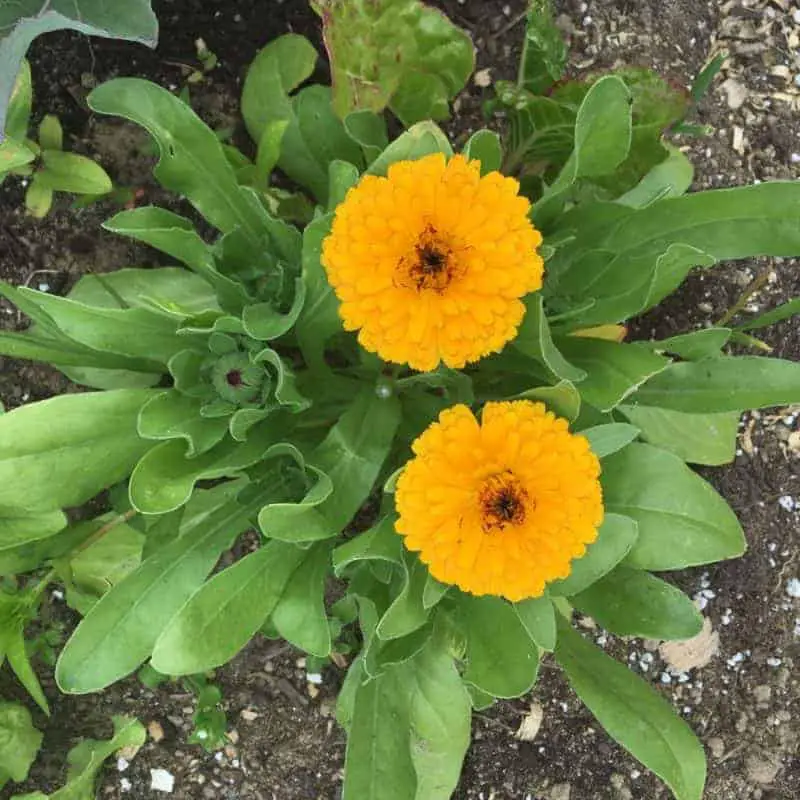
Calendula Oil Benefits
- Anti-fungal
- Promotes cell repair & growth
- Antiseptic
- Anti-inflammatory
If you’re new to making herbal remedies or growing a medicinal herb garden, calendula is one of the easiest herbs for beginners.
It’s not fussy at all to grow, and the more flowers you pick the more it produces. It blooms from early summer and will even withstand a light frost and keep on flowering. This flower attracts the bees and other beneficial bugs and is a wonderful addition when you’re companion planting flowers in your garden.
How to Make Calendula Oil
Infusing calendula into an oil is a great way to make salves, ointments and home body care products. Calendula oil has a lot of benefits for your skin.
There are two ways to infuse oils, one by heating up the oil as a ‘hot infusion’ which I don’t do as it can reduce some of the healing qualities. The second method is the ‘solar infusion’ method and that’s the one I’ll be talking about today. You basically infuse your plants in a warm place which allows the plants & oil to gently warm up and infuse its properties.
If you don’t have homegrown calendula petals that you dried you can also buy dried calendula.
Fill Jar with Dried Calendula Flower Petals
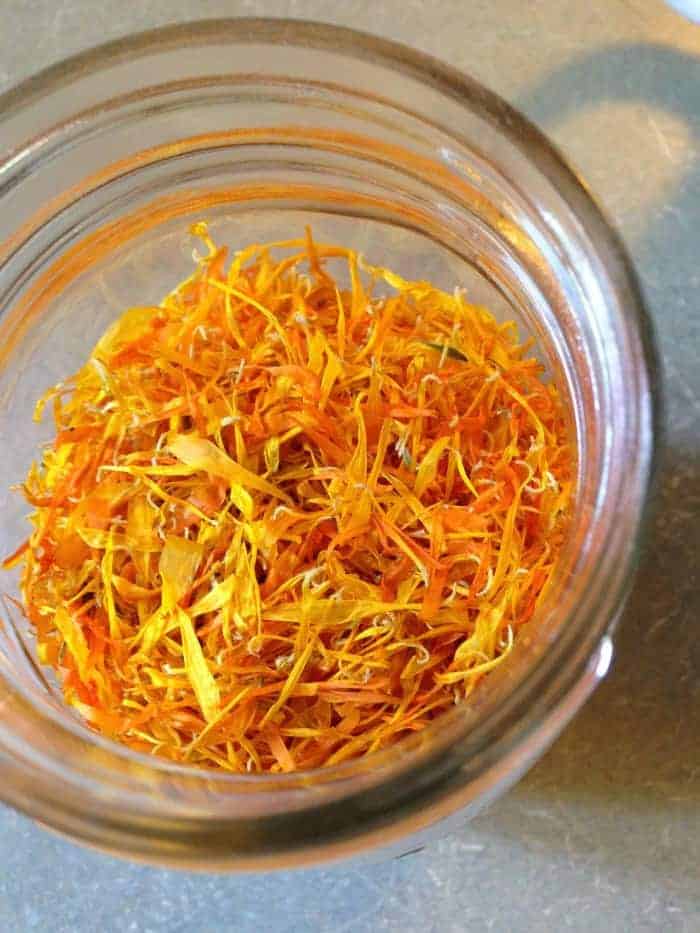
You definitely want dry flowers to avoid any moisture which can create potential spoilage.
You want to use a clean sterilized glass jar and only use dry calendula flowers. Make sure nothing is wet as added water content can lead to mold and spoilage. I fill the jar about 3/4 of the way up with dried calendula. With most infusions, you would fill the jar to the to 1/2 way mark but I find that Calendula is light and gets weighed down after adding the oil.
Poor Oil Over Dried Flowers
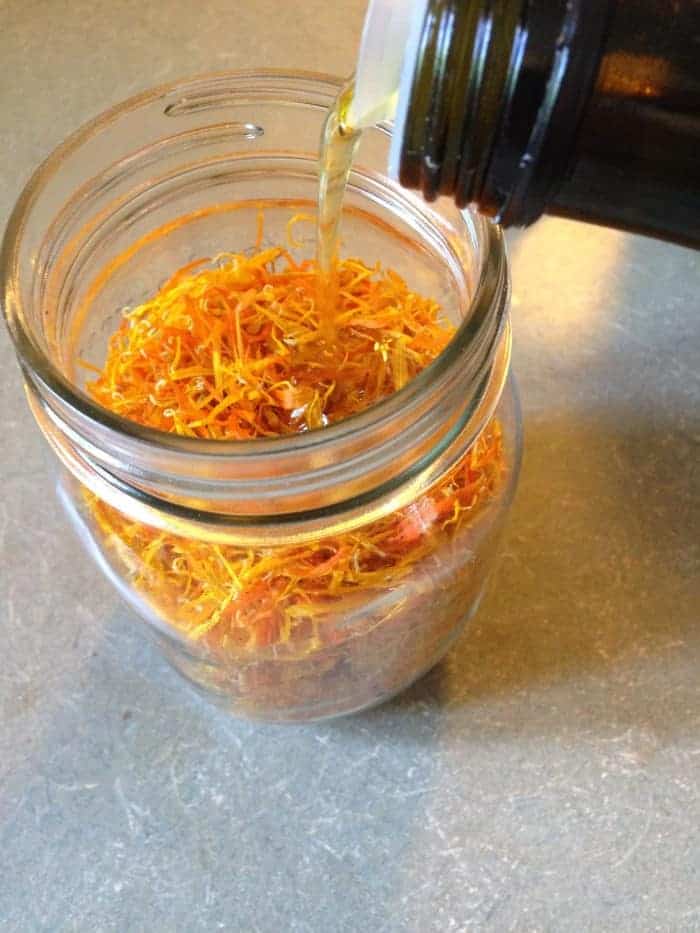
You can use olive, grapeseed, almond or apricot oil for this part. Olive oil is often used because it offers a slightly better shelf life. I use organic cold pressed olive oil which might seem like a splurge but because the skin is our largest organ and because I’m using this oil for healing and body products, I use a higher quality oil. It’s all depending on personal preference.
Fill the jar leaving some head space at the top, I usually full until the first brim line on a mason jar. Make sure all flowers are completely covered.
Cover With a Lid and Place in a Warm Sunny Spot
The lid you use will depend on what container you used, any clean glass container with a lid will suffice. You won’t want air or moisture going in so definitely make sure the top is covered. Keep in a sunny window for a few weeks, shaking the jar gently once every few days.
After a few weeks, you can strain your calendula oil with a cheesecloth and store in a cool dark place for up to a year.
Harvesting Calendula for Calendula Oil
To harvest Calendula, wait for the first flowers to appear in early summer then you can begin harvesting. The more you pick, the more it flowers. I pick the flowers every 3 days, harvesting most of them but leaving a few for the bees. By the time it takes for each batch of calendula petals to dry out there are usually lots more that pop up in the garden.
Don’t harvest the flowers wet after the rain or garden sprinkler, they should be dry when you harvest them.
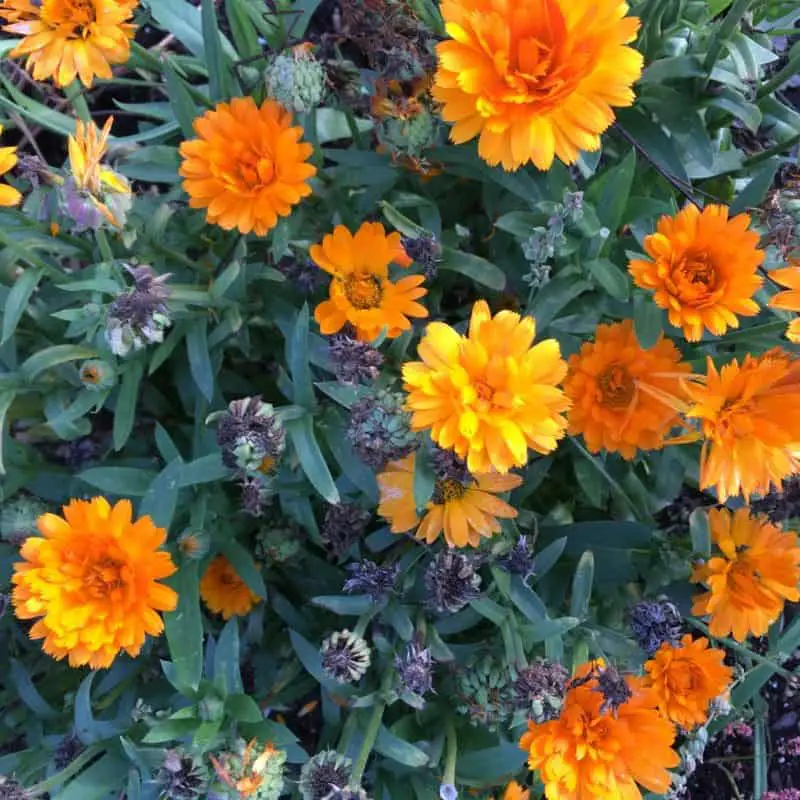
Don’t wash the petals as you don’t want to add moisture for the drying process.
The flowers may feel a little sticky, and that’s great! It’s the anti-fungal properties of the plant. You might see some micro little thin bug like things but I find they scatter away or dry along with the flower. I’ve been air drying Calendula for a few years now, usually just on a plate.
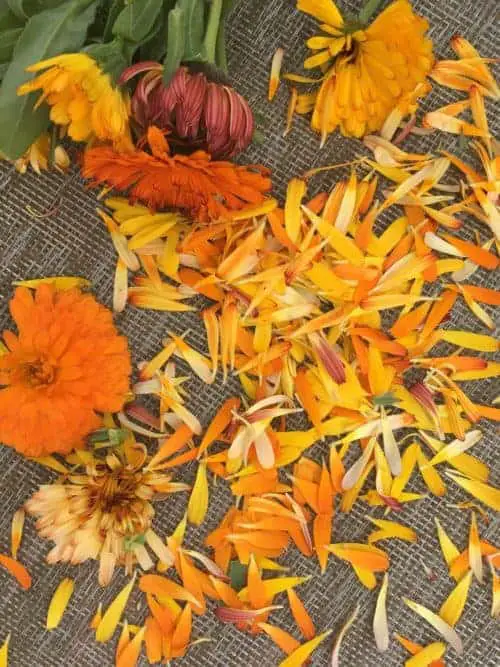
A drying rack is better if you have one as it allows for more air flow.
I turn over the petals multiple times in a day to allow for adequate air circulation. As you can see in the photo below, I just gently pick off the petals, then a few days later you’ll end up with air dried calendula petals.
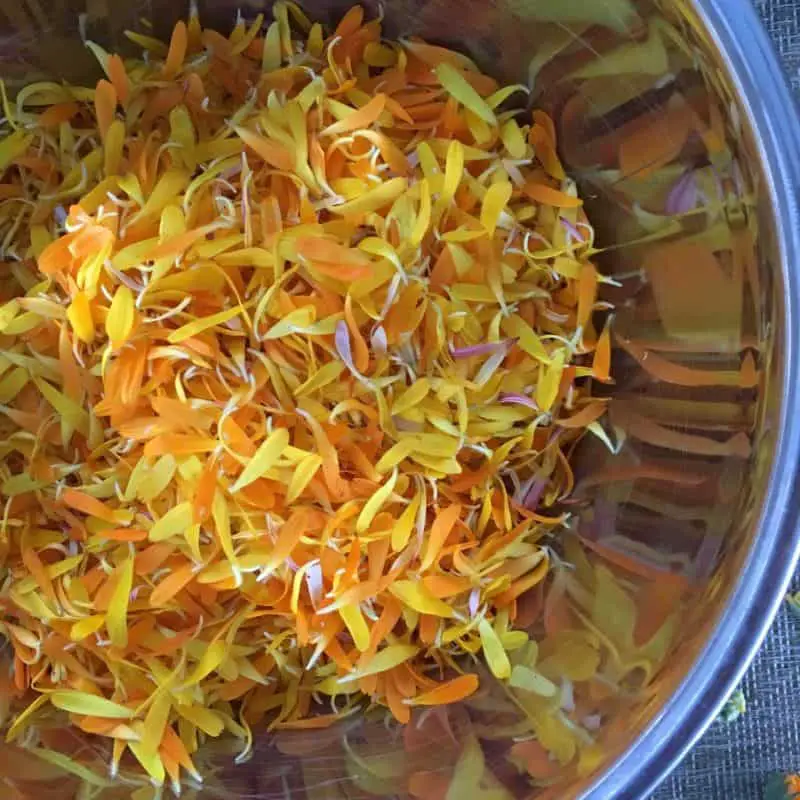
Some people dry the whole flower heads then pick off the petals.
I find it takes longer to dry and dries better as individual petals. I also don’t find peeling off the petals a hard task. In fact it’s pleasant as this flower is wonderfully fragrant and I usually do it beside my kids as they’re doing some homeschooling or art work. But if you have a lot of flowers to do then it’s easier to let the whole flower heads dry then pick off the petals.
Once it’s very dry I place ours in a mason jar and put a lid on it. If you have a lot of moisture in the air it may take longer to dry. Check on it after a couple of days, we’ve had some years that after it’s been stored in a mason jar there’s still too much moisture so they soften a little. If that happens I just spread the petals out again and dry them a little more before storing. You definitely want dry petals before storing otherwise it will mold.
Store the jar of petals in a cool dark place away from light until you’re ready to use it.
Have you ever tried to make calendula oil? How did it go?


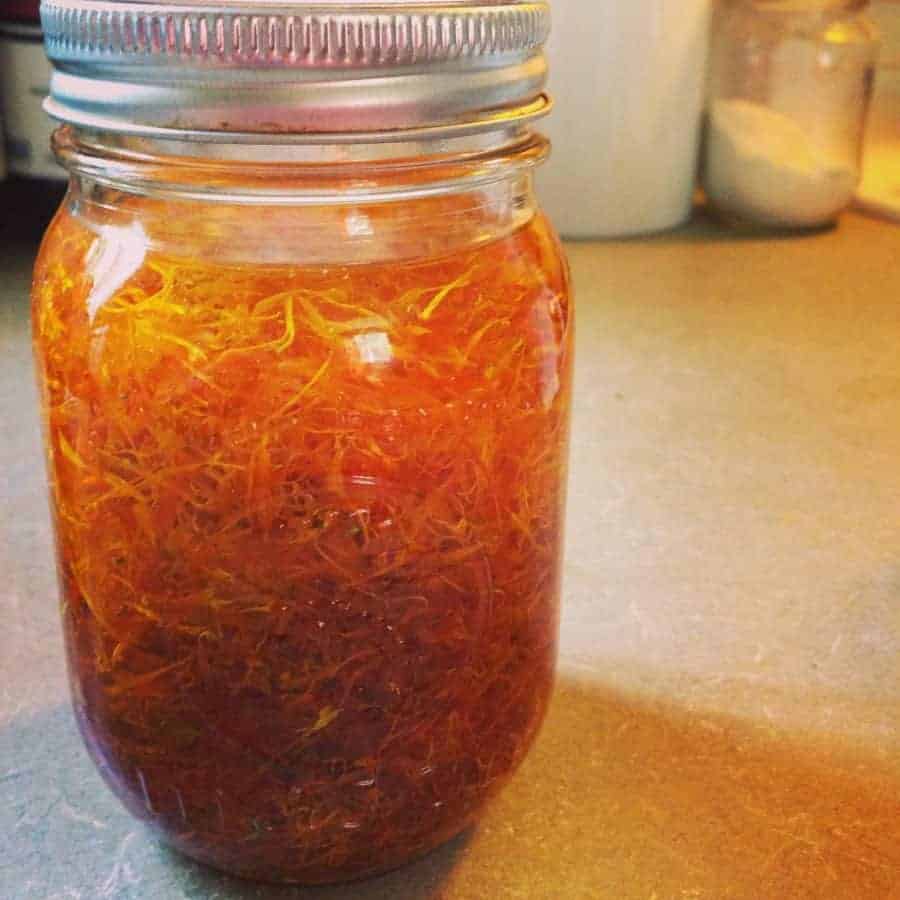
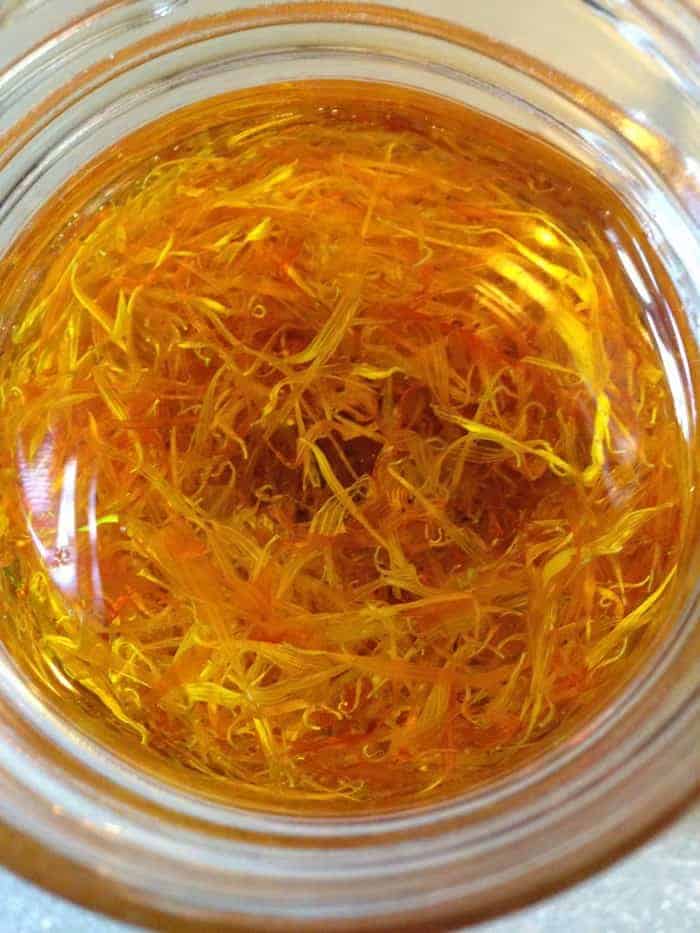
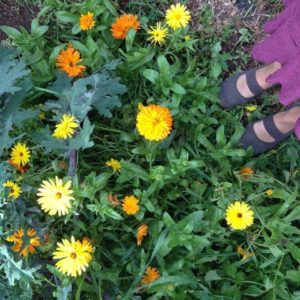
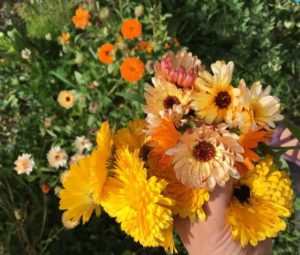
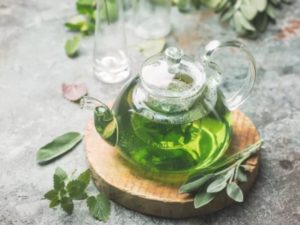
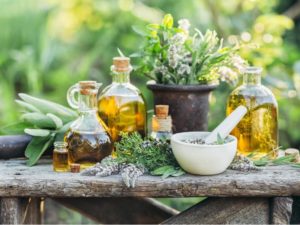
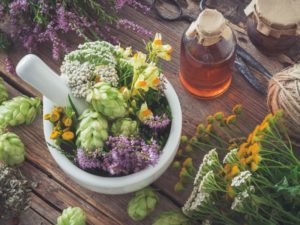
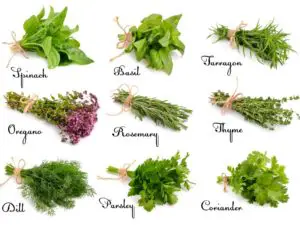

Calendulas are only good for their petals?
What happens if you use the whole flower after drying in the oil? Should have read more carefully. Can it be saved?